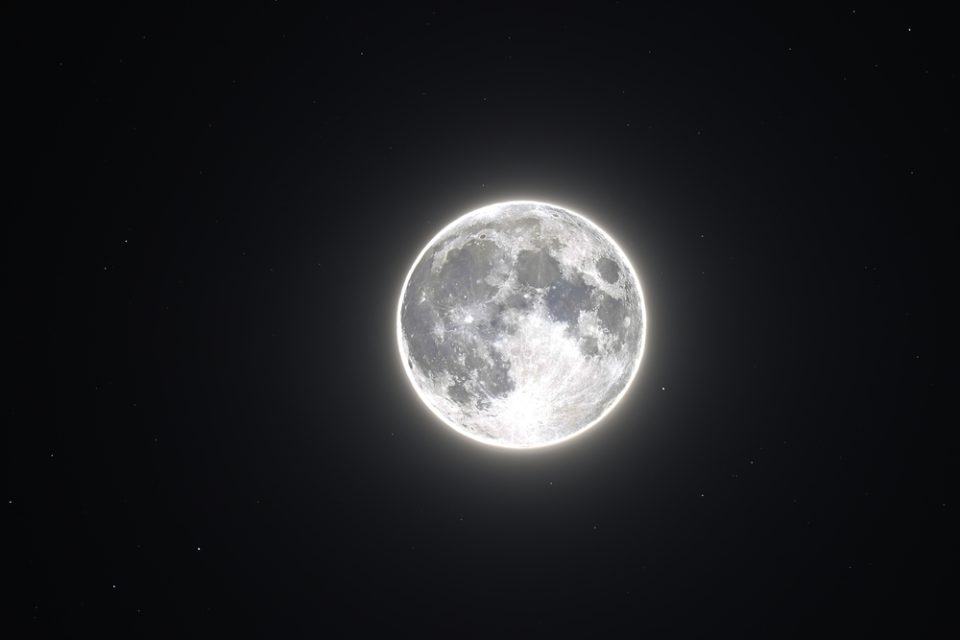New study uncovers the moon’s ancient secrets

A groundbreaking study in Nature has shaken up our understanding of the moon’s formation. This research suggests that the moon was born during Earth’s earliest days, revolutionizing the timeline of lunar genesis. For years, scientists believed the moon formed around 4.35 billion years ago, but this new study pushes the moon’s origin back to approximately 4.51 billion years. This adjustment to the moon’s age changes everything we thought we knew about its history and Earth’s early development.
Redefining lunar origins
The study challenges the previously accepted theory of the moon’s creation. For decades, the leading belief was that the moon formed after a giant impact between Earth and a Mars-sized object. This new research, however, suggests a more complicated history. Researchers utilized advanced analytical techniques to study lunar rock samples brought back from the Apollo missions, and the results were surprising. The new evidence suggests that the moon’s true age is older than previous estimates, implying a different scenario for its birth.
The gravitational dance of early formation
To understand the moon’s history, it’s important to recognize the gravitational relationship between earth and the moon in its early days. The study reveals that early tidal forces played a major role in shaping the moon’s geology. These forces were so intense that they altered the moon’s surface and internal structure. At first, the moon was much closer to Earth, and over time, it slowly drifted away. As the moon moved further from Earth, tidal forces began to trigger internal heating, resetting geological timestamps in lunar rocks.
Revolutionary analysis methods
The research team, led by Francis Nimmo at the University of California, Santa Cruz, employed groundbreaking analytical methods to uncover the moon’s true age. They analyzed the chemical makeup of the lunar rocks, revealing that previous age estimates had been skewed. Scientists now know that the moon experienced a significant melting event after its initial formation, which had previously masked its true age. By applying new techniques, the team could accurately date the rocks, revealing that the moon formed even earlier than originally thought.
Tidal forces
Tidal forces aren’t just responsible for the ocean tides on Earth—they also play a crucial role in shaping celestial bodies like the moon. The study introduces tidal heating as a major factor in lunar evolution. Tidal heating happens when gravitational forces cause a planet or moon to stretch and compress, generating heat inside. This process is similar to what we see in Jupiter’s moons, where tidal forces from the giant planet create volcanic activity on some of its satellites. The moon, too, experienced tidal heating early on, and this likely reshaped its geological features. This new understanding opens the door for future studies on how other moons in our solar system might have evolved in a similar way.
Future exploration implications
This new understanding of the moon’s age has profound implications for future lunar missions. With this revised timeline, missions like China’s Chang’e 6 and NASA’s Artemis program will have the opportunity to target areas that could hold clues about the moon’s earliest history. These missions may be able to confirm or further refine the new age estimate, helping scientists build a clearer picture of how the moon formed. With the new knowledge of tidal heating and internal changes, lunar explorers might be able to uncover even more secrets about the moon’s geological evolution.
Scientific consensus and future research
While this study has caused a stir in the scientific community, it’s still part of a broader effort to understand the moon’s formation and early history. These findings are a significant step toward resolving long-standing debates about the moon’s age, but more research is needed to confirm the results. The new theory not only impacts lunar studies but also has broader implications for our understanding of Earth’s early history and the development of other celestial bodies in the solar system. By studying the moon’s origins, scientists hope to better understand how planets and moons form and evolve.
As lunar exploration continues, the refined timeline of the moon’s birth will guide future research. With upcoming missions and new technologies, the potential for groundbreaking discoveries in lunar science is greater than ever. This research brings us closer to understanding not just the moon’s past but the story of our solar system’s early days and the forces that shaped it.














